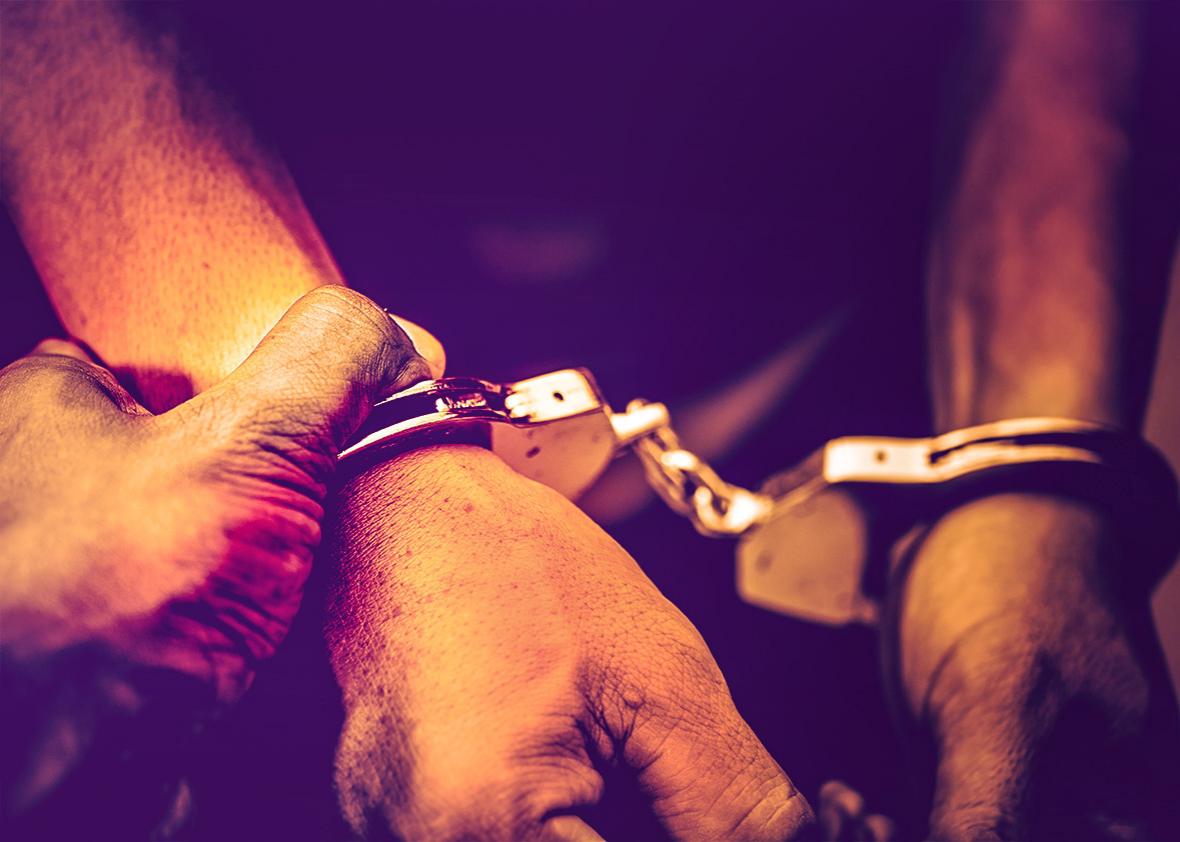Leon Neyfakh’s article on the killing of Jonathan Ferrell and its aftermath was made possible by your Slate Plus membership. Here, just for Slate Plus members, Neyfakh explores the case that set the legal standard for when police can use force.
While reporting my story on the death of Jonathan Ferrell, a young black man who was killed two years ago in Charlotte, North Carolina, when a police officer shot him during a tense nighttime encounter, I came upon an intriguing coincidence.
I was trying to understand how law enforcement agencies and prosecutors determine whether police officers who kill in the line of duty were justified in using lethal force. It turned out that one of the two Supreme Court decisions that established the way such calls are made was inspired by an incident that took place in Charlotte, not far from where Jonathan Ferrell was killed.
When I looked into the case, I was surprised to find that it turned not on a police shooting but on a container of orange juice.
What happened was this: On Nov. 12, 1984, a 39-year-old diabetic man named Dethorne Graham began to experience the symptoms of an insulin reaction. He needed sugar fast, so he asked his friend, William Berry, to drive him to a convenience store. When they arrived, Graham ran inside and grabbed an orange juice from the refrigerator before heading to the cash register to pay. But there was a line, and Graham was in too much discomfort to wait. Panicked, he put the orange juice down and ran out of the store and back into Berry’s car so they could look for a source of sugar somewhere else.
As it happened, a Charlotte police officer was watching Graham and became suspicious when he rushed out of the store. Thinking that Graham might have stolen something or committed another crime, the officer followed Graham and Berry in his cruiser, and about a half-mile down the road he pulled them over.
While the officer called for backup, Graham’s condition was rapidly deteriorating. With the car pulled over on the side of the road, he opened the door, got out, and ran around before sitting down on the curb and passing out. Soon more officers arrived at the scene. After one of them rolled Graham over and handcuffed him behind his back, others picked him up and set him facedown on the hood of his friend’s car.
Berry tried to explain that Graham was diabetic and needed sugar, but the officers paid no attention; one remarked that Graham was obviously just drunk. When Graham came to, he told them he had a medical card in his wallet that would prove he was diabetic, but an officer told him to shut up and shoved his face into the hood of the car. Soon Graham was thrown headfirst into the back of a police cruiser. When a second friend showed up at the scene and tried to give him orange juice, the officers forbade Graham from taking it.
Finally, the officer who had originally pulled Graham and Berry over received confirmation from the convenience store that Graham had not committed any crime. Satisfied, the officers drove Graham home. He had suffered a broken foot, bruises on his forehead, cuts on his wrists, and an injured shoulder. Believing he had been illegally abused, Graham took the officers to court, arguing that they had used excessive force in arresting him.
The case dragged on for years before reaching the Supreme Court in 1989. The opinion, written by Chief Justice William Rehnquist, argued that the proper way to assess whether a police officer has acted illegally in applying use of force is to look at the Fourth Amendment.
The Fourth Amendment, Rehnquist wrote in his opinion, protects people from “unreasonable search and seizure,” and since the use of force is a form of seizure, it is appropriate to subject it to the reasonableness standard. The core of the ruling was Rehnquist’s definition of “unreasonable.” It was impossible, he held, to judge the reasonableness of any law enforcement decision without considering the facts and circumstances of the particular case, including the “severity of the crime at issue, whether the suspect poses an immediate threat to the safety of the officers or others, and whether he is actively resisting arrest or attempting to evade arrest by flight.”
Further, Rehnquist wrote, “the calculus of reasonableness must embody allowance for the fact that police officers are often forced to make split-second judgments—in circumstances that are tense, uncertain, and rapidly evolving—about the amount of force that is necessary in a particular situation.” Therefore, the “ ‘reasonableness’ of a particular use of force must be judged from the perspective of a reasonable officer on the scene, rather than with the 20/20 vision of hindsight.”
The court’s decision in Graham v. Connor—which resulted in the case being sent back to the U.S. Court of Appeals for the 4th Circuit so that it could apply the new standard—has been incredibly influential. It’s taught in police training courses across the country and has been cited in thousands of police misconduct cases. Critics of law enforcement practices say it’s largely to blame for the leeway courts tend to give police officers when it comes to the use of force.
Did Charlotte police officer Randall Kerrick act unreasonably when he shot and killed Jonathan Ferrell, almost 25 years after Dethorne Graham was beaten up for hurrying to get his orange juice? His superiors at the Charlotte-Mecklenburg Police Department and the prosecutors in the North Carolina Attorney General’s Office believed he did. Eight of 12 jurors disagreed. Which goes to show how subjective that supposedly objective reasonableness standard is.
